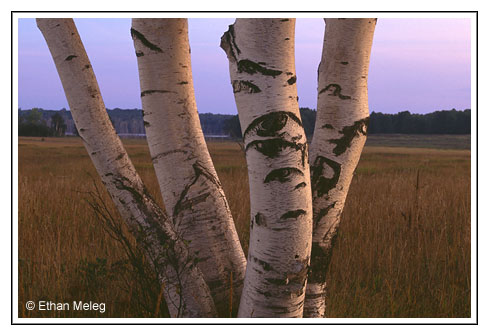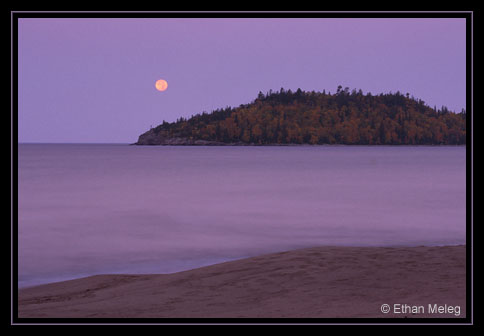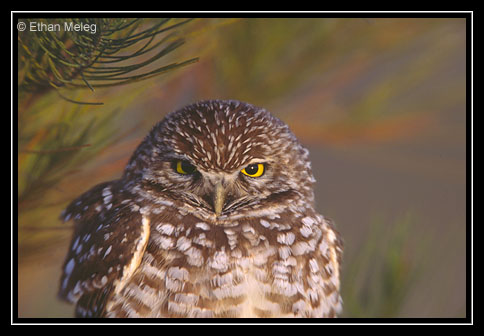
Nature Photography Tips
Less Is More!

Nature photographers thrive on the wonderful
diversity of the natural world - it’s what inspires us to get up early in
the morning. There’s never a shortage of things to point your camera at,
from birds to rocks to flowers to trees to bug to bats. From before dawn to
after dusk. Well you get the idea. Sometimes I actually get frustrated trying
to decide what to photograph. What a fantastic predicament to be faced with!
Although it’s easy to find things to fill your viewfinder, a
greater challenge is deciding what not to put in the picture. All too often we
clutter our images with extra stuff that doesn’t add to the photo. A
picture can be too busy to its detriment.
Enter the concept: ‘less is more’. I find myself repeating this to
myself often. Every time I take a picture these days, I’m thinking ‘less
is more’. This concept is helping me to make stronger images that have
impact. It’s made me think about what I’m trying to say with my photos. If
a picture is worth a thousand words, do you know what those words are?
Here’s some tips for making strong, simple photos according to the ‘less
is more’ principle.

1) Think concepts.
Photos that convey a concept, emotion or mood tend to have impact.
Sometimes we luck out and nab a photo that achieves this, but more often it
requires advance planning. Think about what you want your photo to say before
you snap the shutter. Pro photographers like to shoot concept shots because
they sell well.
2) Know what your subject is.
Do you know what you’re taking a picture of? Define your subject and
make sure it comes across clearly in the image. I often sketch out a photo on
paper before I pick up my camera to be sure I know what I'm trying to
accomplish.
3) Eliminate extraneous elements.
If it doesn’t support your concept or subject, don’t put it in the
photo.
4) Watch your background.
A messy or busy background can distract from your subject.
5) Isolate with a longer lens.
A longer lens allows you to narrow in on your subject and create clean,
out-of-focus backgrounds.
6) Change your perspective.
Moving your camera position is one of the easiest ways to find a clean,
strong angle that emphasizes your subject.
7) Check the edges.
Before taking a picture, do a visual lap around the edges of the
viewfinder to check for things accidentally sneaking into the photo. Be on the
lookout for hydro wires, stray branches, out of focus leaves, tripod legs,
filter edges (vignetting) or your own thumb!
Next time you’re out exploring the natural world
through your camera viewfinder, be sure to remember that often, ‘less is
more’. Soon you’ll be creating powerful and inspirational photos that get
‘wows’ from your friends and make you smile with pride.
Attached Photos:
1) Birch Tree Trunks in Meadow
Bruce Peninsula National Park, Ontario (September
2003)
Canon EOS 1N; EF 100mm/f2.8 Macro; Fuji
Velvia
2) Moon over Lake Superior
Gargantua Harbour, Lake Superior Provincial
Park, Ontario (October 2003)
Canon EOS 1N; EF 100mm/f2.8 Macro; Fuji Velvia
3) Burrowing Owl
Cape Coral, Florida (December 2002)
Canon EOS 1N; EF 600mm/f4 USM; Fuji Velvia
BACK
to Tips Main Page
This
site © Ethan Meleg, all rights reserved. No form of reproduction,
including copying or saving of digital image files,
or the alteration or manipulation of said image files is
permitted. Any unauthorized use of these images will be
prosecuted
to the full extent of federal copyright laws. Site design and
maintenance by Ethan Meleg.




